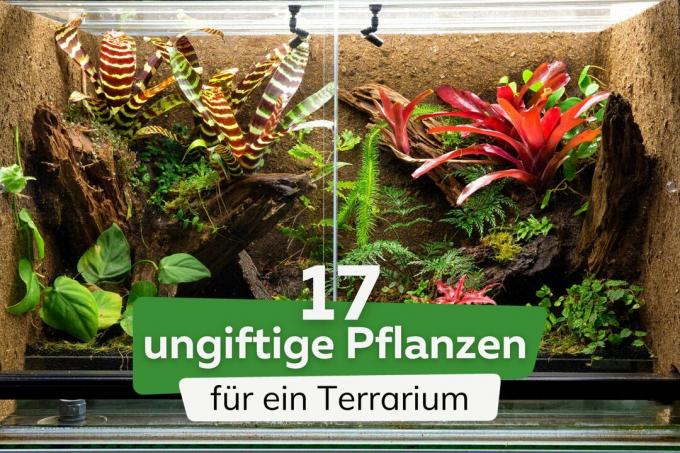
Plants in a terrarium are a real eye-catcher and, in conjunction with terrarium animals from tropical regions, are essential for a natural living environment. It is important that they are non-toxic, like the 17 plant examples here.
To the point
- only a few flowering non-poisonous terrarium plants
- Not all specimens are equally non-toxic for terrarium animals and children
- Large selection of non-toxic plants ensures flexibility in decoration
Table of contents
- Terrarium plants with B
- Non-poisonous plants from D – G
- Plants for a terrarium with K
- N-T
- Terrarium plants with Z
- frequently asked Questions
Terrarium plants with B
Mountain palm (Chamaedorea elegans)(Chamaedorea)
The Mountain palm brings South American flair to every terrarium and has a high decorative value.

- growth: upright; Growth rate about 20 cm to 30 cm per year
- Location: bright to partially shaded, no direct sunlight; like cooler in hot summer months
- particularities: reacts sensitively to permanent waterlogging
Birch fig (Ficus benjamina)
This is a plant that is very popular in countless households outside of terrariums due to its dense growth.
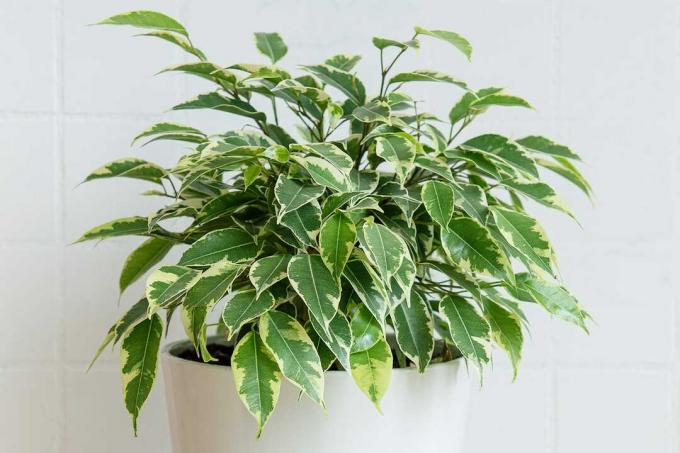
- growth: compact, bushy-upright; Height 20 cm and upwards; fast growing
- Location: sunny to partially shaded; no bright sunlight; Summer temperatures between 22 and 28 °C, winter temperatures not below 18 °C
- particularities: easy to cut and “formable”; Mini varieties such as 'Lovely' and 'Kinky' are ideal; robust and durable
Bromeliad (Bromeliaceae)
Bromeliads offer numerous species in different growth sizes, so that they can be selected perfectly based on the size of the terrarium.
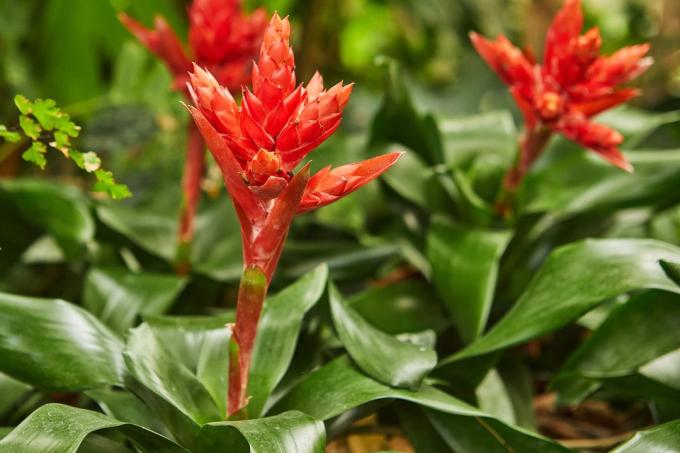
- growth: mostly rosette-like, with leaf funnel, side leaves slightly curved; mediocre growth rate
- Location: warm, bright, no direct sunlight
- particularities: offers optimal hiding places for frogs, lizards and geckos; Blooms only once in its life for around six months
Our tip:, that If faster growth is desired, it helps to place an apple in the terrarium right next to the plants. The fermentation substances released by the apple promote the growth of bromeliads.
Non-poisonous plants from D – G
Dragon tree (Dracaena)
The Dragon tree is a very decorative, particularly robust and easy-care plant that purifies the air and contributes to an improved indoor climate.

- growth: stiffly upright or overhanging; growing slowly
- Location: sunny to partially shaded; no direct sunlight; protected from drafts
- particularities: ideal for semi-arid and rainforest terrariums; very undemanding
Ivy plant (Epipremnum aureum)

- growth: creeping or climbing, perennial, herbaceous; without pruning, growth length of up to three meters; fast growing
- Location: sunny to partially shaded; Ambient temperature 18 to 22 °C, during winter season 15 to 17 °C
- particularities: Danger of confusion with Philodendron, with less space it grows slower and shorter
Notice: The ivy is slightly poisonous, but is still well tolerated by reptiles. Consumption can only lead to mild symptoms of poisoning in small children and weakened people.
Staghorn fern (Platycerium)
The Staghorn fern is considered the “veteran” of terrarium plants and is a very popular non-toxic terrarium plant due to its extravagant appearance.
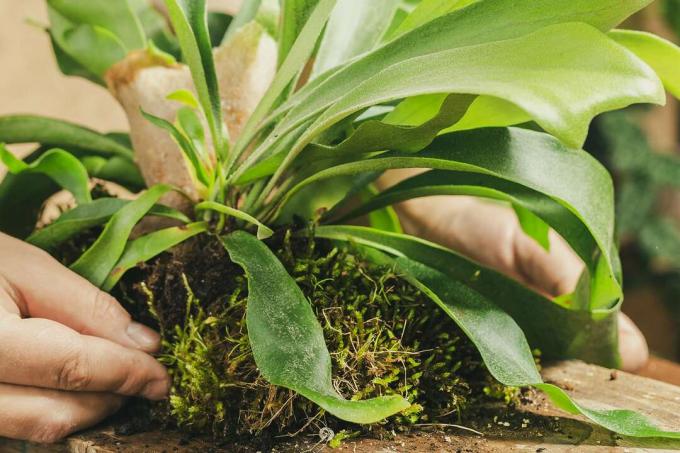
- growth: sprawling, arched-overhanging; Growth height up to 50 cm and beyond; growing slowly
- Location: sunny and bright
- particularities: prefers low-lime orchid or leaf soil with a pH value of around 5.0
spider plant (Chlorophytum comosum)
The spider plant has a significantly increased water requirement during the warm season, which must be taken into account when planting in the terrarium.
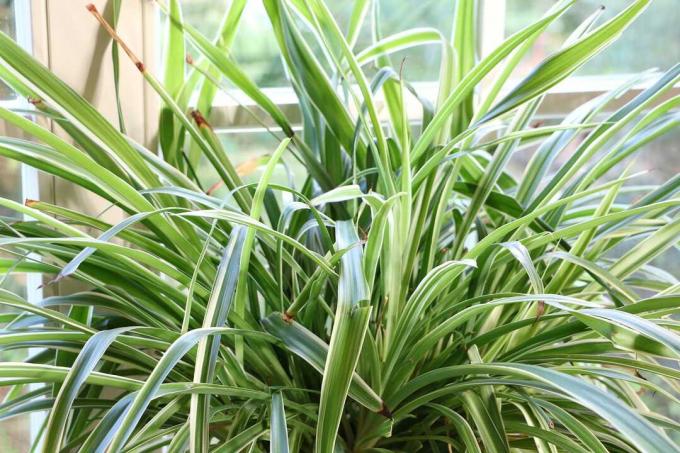
- growth: clump-forming, perennial, herbaceous, bushy, overhanging; Growth height up to 60 cm; grows slower the darker the location
- Location: sunny to shady; room temperature
- particularities: particularly undemanding and robust
Plants for a terrarium with K
Chestnut wine (Tetrastigma voinierianum)
This climbing plant climbs up every possible stopping point and needs to be trimmed regularly so that it doesn't block the light.
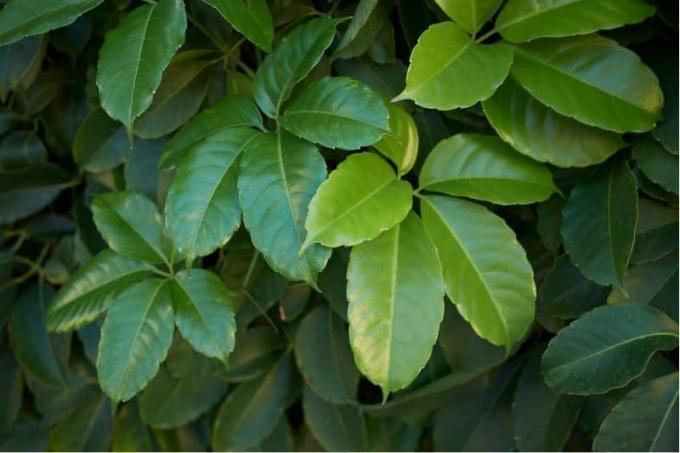
- growth: climbing; Growth height up to 200 cm; fast growing
- Location: semi-shady to shady
- particularities: forms hand-sized leaves; requires a lot of space in the terrarium
Basket Marante (Calathea makoyana)
This tropical foliage ornamental plant Brings variety to every terrarium thanks to its leaf pattern.

- growth: broad and bushy; up to 30 cm high; growing slowly
- Location: bright, but partially shaded; no direct sunlight
- particularities: occasionally produces colored inflorescences
Creeping beautiful cushion (Callisia repens)
The otherwise lazy-flowering beautiful cushion shows its white flowers every spring in the terrarium under ideal tropical conditions and fills terrariums with color.

- growth: creeping, dense; height 10 to 20 cm; mediocre growth rate
- Location: sunny to partially shaded; room temperature
- particularities: popular food plant for pets with high vitamin and mineral content
N-T
Moth Orchid (Phalaenopsis ssp.)
This robust orchid variety offers even inexperienced plant lovers an elegant option for terrariums, where it is best placed in the middle and elevated so that it doesn't get its feet wet.
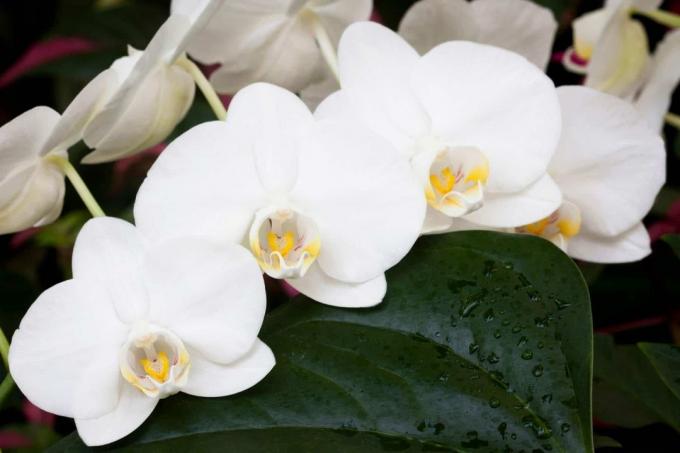
- growth: upright; Growth height between 1 and 15 cm; growing slowly
- Location: sunny, bright, no direct sunlight
- particularities: Main flowering period between November and April; at high humidity possible to bloom twice; Stiel offers good climbing opportunities for geckos etc.
Nest fern (Asplenium nidus)
This is a special non-poisonous fern species that thrives well in the sun, while most other species prefer partial shade to shade.

- growth: upright, slightly spreading; Growth height up to 90 cm and beyond; very slowly growing
- Location: sunny to partially shaded; no hot midday sun
- particularities: must not be too wet
Ray palm (Licuala grandis)
The ray palm is also known as the Vanuata, frilled and spoon palm and impresses with its elegant appearance.
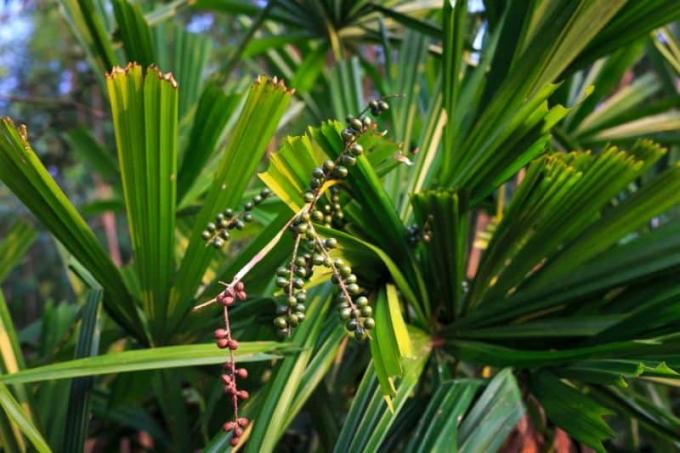
- growth: single-stemmed, upright, fan-like, slow; depending on the space available and Variety up to 300 cm
- Location: sunny to partially shaded, no midday sun; Ideal temperatures between 25 and 35 °C
- particularities: Can be kept small due to limited space
Tillandsia (tillandsia)
Both Tillandsia A distinction must be made between the “gray and green” varieties, which place different demands on their environment.

- growth: “epiphyte growth”; upright and slightly curved; Growth height between 15 and 20 cm; growing slowly
- Location: Gray Tillandsia – full sun, high humidity, low soil moisture; Green Tillandsia – partial shade to shady, cool, moist climate
- particularities: should be kept in an open terrarium to avoid hot, stagnant air
Terrarium plants with Z
Ornamental asparagus (Asparagus densiflorus)
The Ornamental asparagus has little in common with edible asparagus and is visually distinguished by its interesting “needled” shoots, which give any terrarium a special charm.

- growth: small shrub-like; climbing; erect to drooping; perennial, herbaceous; with limited space up to 30 cm in height; fast and strong-growing
- Location: sunny to partially shaded
- particularities: can form poisonous berries, but is extremely rare in cultivated specimens; slightly sensitive to care errors
carpenter ash (Radermachera sinica)
The carpenter ash is mainly available commercially as a young plant, which thrives through regular pruning Cultivation in a terrarium can be “educated” in order to adapt impressively to the limited space available can.

- growth: upright, slightly bushy; Growth height up to 150 cm
- Location: shaded from east or west windows; 18 to 22 °C ambient temperature, in winter 8 to 12 °C
- particularities: rarely flowers in cultivation; can be easily propagated
Dwarf pepper (Peperomia)
There are countless varieties to choose from, almost all of which are ideal terrarium plants as succulents and are available with green or variegated leaves.

- growth: depending on the variety, perennial, creeping, hanging, upright; Growth height between 15 and 30 cm; relatively slow growth
- Location: sunny, without direct midday sun
- particularities: under optimal conditions, inconspicuous flowers from April to December
Our tip: The most suitable dwarf pepper varieties include Pepermomia caperata 'Red' for terrariums with moderate humidity Peperomia caperata 'Rosso' for dry terrariums at room temperature and Peperomia obtusifolia for high humidity in the terrarium.
frequently asked Questions
There are a number of plants that do not belong in a terrarium due to their toxicity, such as: Ivy (Hedera helix), Lucky Feather (Zamioculcas zamiifolia), Purple Tute (Syngonium podophyllum) and begonias (Begonia). Dieffenbachia (Dieffenbachia), which has no place in a terrarium or near children, is particularly poisonous. However, you can safely place the plant examples mentioned in the article in a terrarium.
As a rule, terrarium animals are guided by their instinct, so they do not eat poisonous plants in the terrarium or only eat them in small quantities. In addition, many reptiles and amphibians are less sensitive to plant toxins. This also explains why there are very few reports of poisoning from terrarium plants. Nevertheless, it is advisable to avoid poisonous plants in the terrarium and to limit yourself exclusively to non-poisonous varieties.
In addition to planting non-toxic plants in a terrarium, the composition of the plant species is also important. They should all have the same requirements for the respective location, the soil and the humidity as well as the water requirements. In addition, planting distances and available space must be taken into account. Overgrown or large specimens will otherwise crowd out others or will not be able to develop healthily and vigorously due to a lack of space. A well thought out planting plan can be useful.
That depends on the type of terrarium. Aloe vera requires a dry desert climate, which is why the plant has no chance of survival in a tropical terrarium. In addition, there are few other plants that have the same requirements in the terrarium and Aloe Vera therefore severely limits the other plant selection. Furthermore, aloe vera is slightly toxic and can cause laxative poisoning symptoms in terrariums with reptiles.



